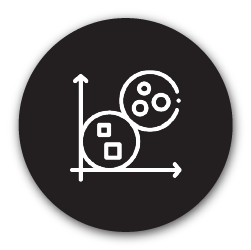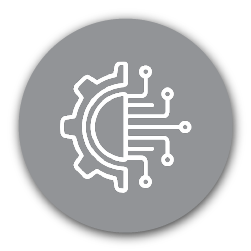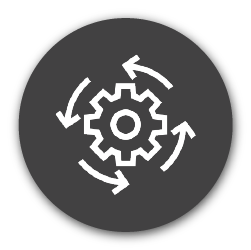As much as the category management process consists of individual steps - DotActiv follows six of them - it's critical to point out that these are not separate steps. They all depend on each other. In reality, each facet of the category management process is interdependent. That is, they are reliant on each other to perform optimally. When paired, you can increase both your predictive power and efficiency.
DotActiv’s software considers the interdependent nature of category management, allowing us to deliver exceptional results.
Of course, it’s one thing to say that each function must work together for you to experience success, it’s another to show you how it works. That’s what you’ll find in this article. We unpack the importance of using each function in partnership with one another and explore the dynamic relationships between them.
The integration of the different elements of category management is the difference between delivering exceptional results or failing.

The Cluster Plan: Grouping similar stores based on characteristics
To understand the interdependencies of clustering, it’s vital to understand the primary clustering methods that you can implement in your business.
There are two:
- Store-based clustering: Is the exercise of grouping your stores based on various characteristics. These characteristics include size, customer profile or LSM and geographic location.
- Category-based clustering: Refers to the specifics of your category, digging into the details and allowing you to group according to category across multiple stores.
As for the bond between clustering, assortments, inventory and your space in-store? Let’s break it down into each function.
First up is the connection between clustering and assortment planning.
As mentioned in another article, it helps if you don’t think about creating your assortment without first setting up your clusters. Here’s why:
Imagine attempting to stock your store with products without knowing what your customers want. How can you expect to get that right? The short answer is you’ll struggle because it will be next to impossible.
By grouping products according to various factors and characteristics, you can create clusters with clear distinctions. That has a direct impact on your assortment.
Next up is the connection between clustering and planograms.
Once you have identified your clusters, it’s easy to choose the right products for your assortment. This makes building planograms a breeze, allowing you to pinpoint your high and low selling items and then decide how many facings each product should receive.
The Assortment Plan: Selecting the products to be on offer
When choosing the products you want to stock in-store, you can't simply pick a range of products and hope they'll sell. In reality, it's the opposite of what you need to do.
Instead, you must consider a range of other factors.
Why? Let's consider the definition of assortment planning to explain further:
Assortment planning is the process of selecting the collection of products you will have on offer in particular areas (localisation) and during specified periods (seasonality).
It also considers the financial objectives and seasonality of your product selection. Doing so allows both you - as the retailer - and your customers to benefit from the outcome. You'll increase your monthly sales. Meanwhile, shoppers will leave your shop satisfied, knowing they can rely on you to provide them with the items they need.
Also, consider the point that assortment planning involves the evaluation of individual product attributes during your product selection exercise to address customer preferences and needs. Those include:
- Brand;
- Size;
- Style;
- Colour;
- Function;
- Price; and
- Stock Keeping Unit.
Your final assortment plan defines the products that make up your category, subcategories, segments and subsegments.
From DotActiv’s perspective, our assortment planning software works from an SQL data platform and integrates with the shelf and floor planning aspects of our software. Doing so allows you to reduce your inventory holding and make space for fast-moving products.
 The Inventory Plan: The quantity and timing of your orders
The Inventory Plan: The quantity and timing of your orders
Having completed the assortment planning process and being satisfied with the items you sell, the next step is to understand product quantity.
In short, how much of each product do you need to have in stock at any given time? Fortunately, there is another aspect of category management that can help. It's at this juncture that efficient inventory management comes into play.
While this may not be the most exciting aspect of running a business, you simply cannot underestimate its importance. Why? Because effective inventory management can make or break your business.
The Chartered Institute of Procurement and Supply (CIPS) defines it well:
Inventory management refers to the practices and processes used to control inventory holding levels, minimise costs and bottlenecks and manage current and future stock requirements.
So how does it connect with your clusters, assortment or space?
No matter which facets you’re focusing on, one thing is common throughout - data. More specifically, it’s the use of data.
When you don't share data between the category management functions, your efforts become inefficient. In fact, your hard work can end up being all for nothing.
It’s also critical to point out that your inventory planning also impacts your planogram. When you add a product to an assortment, it gets ordered. Likewise, when you remove a product from your assortment, but you still have stock, it remains on the planogram.
 The Space Plan: Positioning products and allocating the correct space
The Space Plan: Positioning products and allocating the correct space
The correct positioning of products and shelf space allocation is vital to ensure you experience short- and long-term retail success. You could even argue that it is one of the most critical elements of your retail strategy.
The complete space planning function consists of two elements:
- Macro space planning (floor planning): Data-driven floor planning can help you determine the space allocation and positioning of each category in-store.
- Micro space planning (shelf planning): Data-driven planograms can help you determine the optimal positioning and space allocations for each product, subcategory and brand within a category. It includes the number of facings deep and wide for each product.
As we mentioned earlier in this article, each function is brought to life when retail data is exchanged accurately and automatically. When not shared between these functions, your retail business becomes inefficient.
Need a category management solution that delivers exceptional results? Talk to us
Let’s consider the below questions to expand further on this:
How do you know how much inventory to order if you don't understand how much space you have available for it in-store?
The short answer is you won't know - anything you decide on would be a guess at best. This is especially true and especially relevant for new store openings.
Initial product orders for new store openings are derived directly from the planograms especially created for the store. The reason for this is simple.
The created planograms contain data-driven space allocations of each product and therefore hold the total count of each product required to fill the shelf. The planograms also hold the days of supply information for each product.
Conclusion
If your team is spending too much time processing data and manually passing it from one function to another, perhaps it’s time to consider an integrated approach.
You’d only need to consider the benefits of this. That includes:
- Simplify the category management process;
- Reduce the time and complexity of data processing;
- Increase the value of your data;
- Make your data more accessible.
All of the above can be achieved when you understand the bond between clustering, assortments, inventory and space planning.
Looking for help?
DotActiv's category management platform unifies the salient elements of the category management process through best of breed software and powerful two-way integrations. You can book a complimentary custom exploratory meeting with a DotActiv expert here or visit our online store here.



